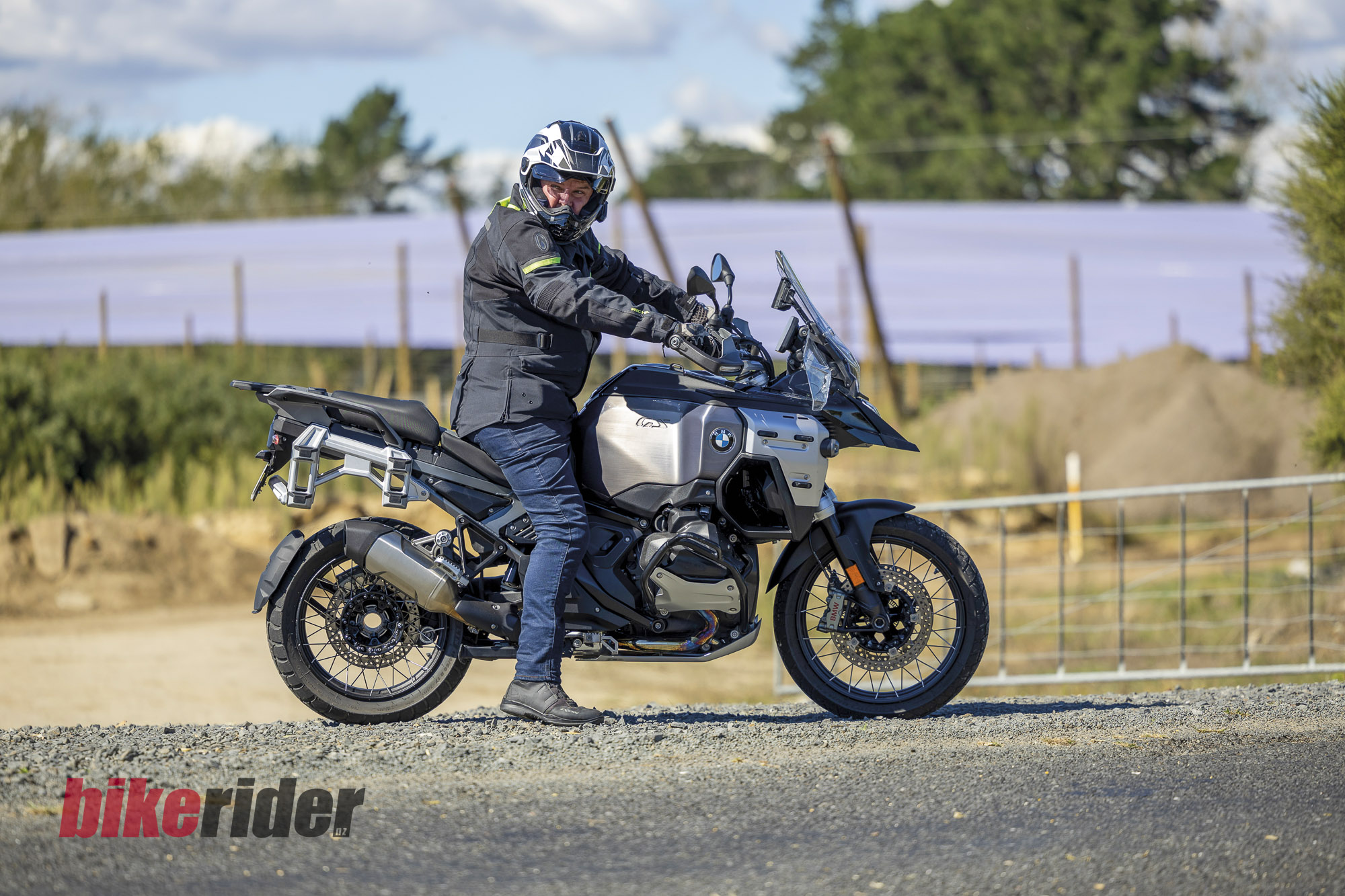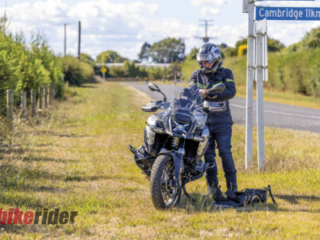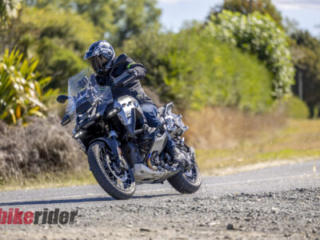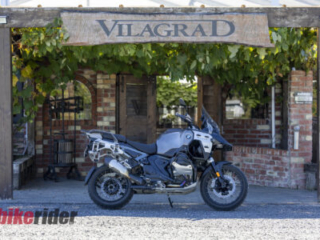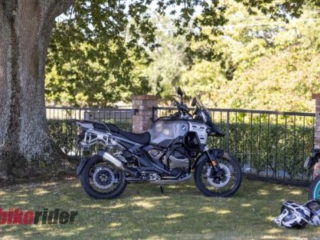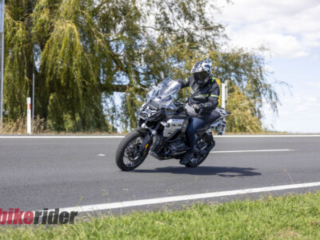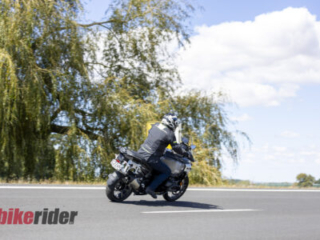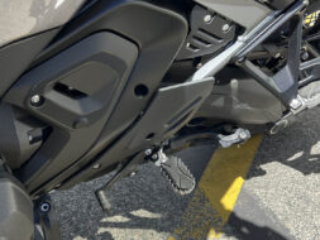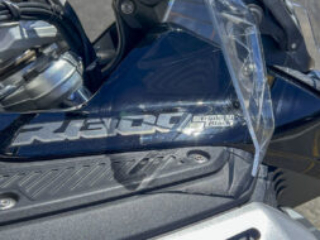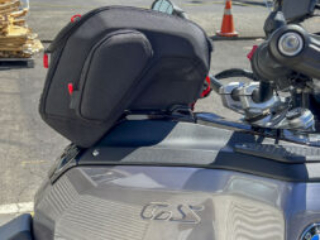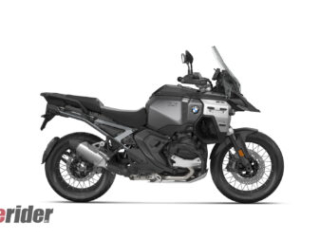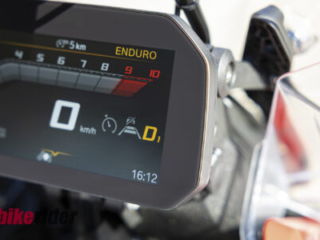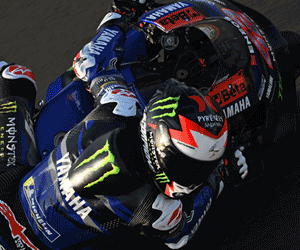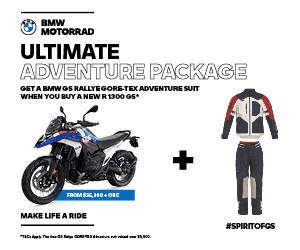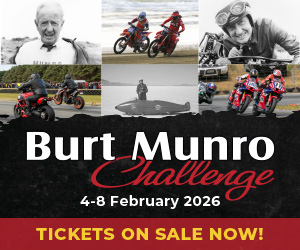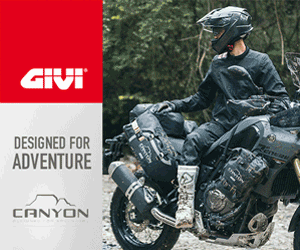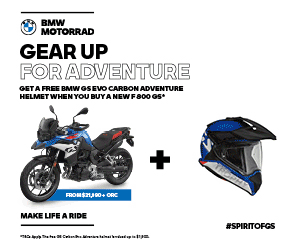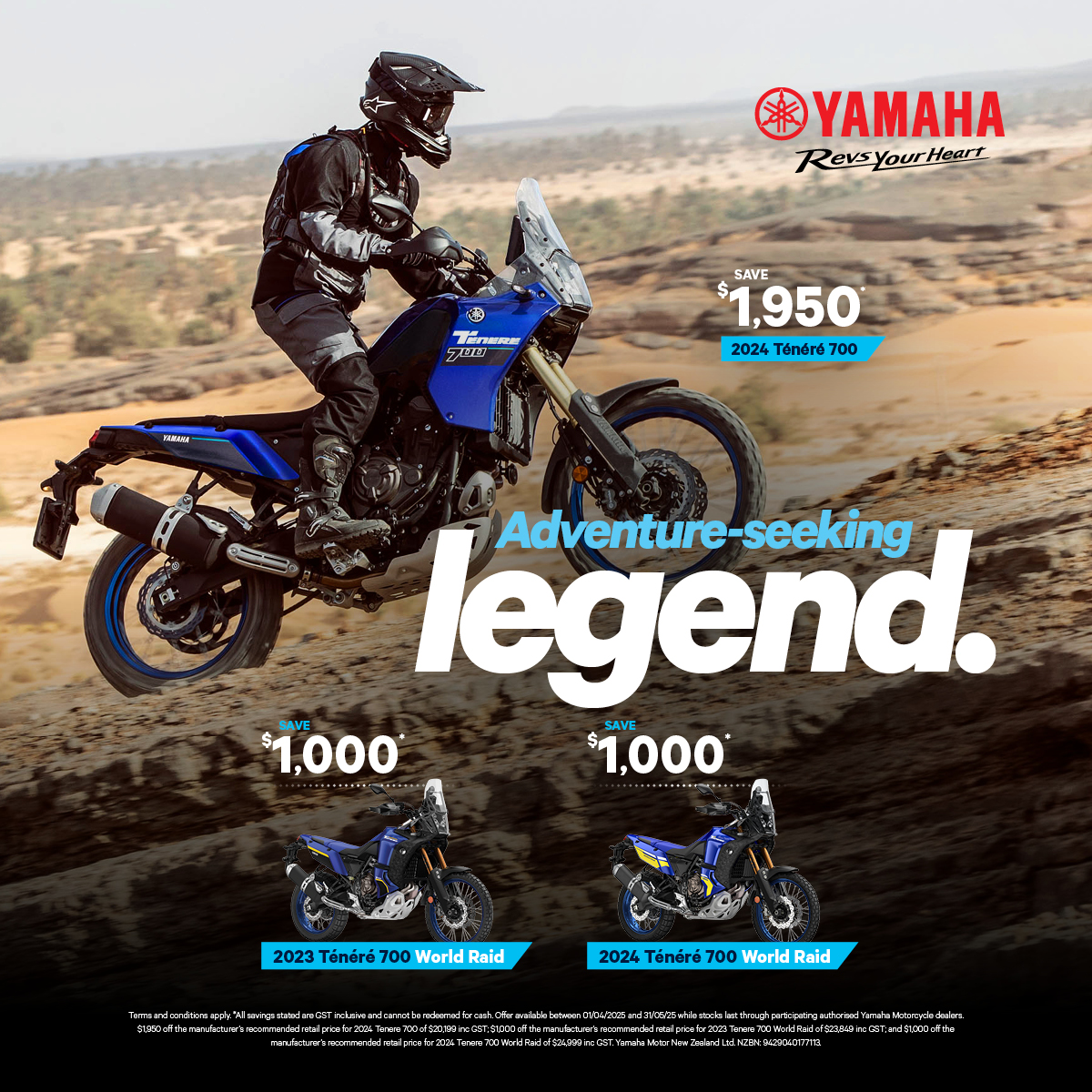- Enormous 30-litre tank delivers genuine 500km touring range without refuelling.
- ASA automatic shift system removes the clutch lever while keeping ultra-smooth manual control.
- Adaptive Vehicle Height Control drops the bike at low speeds, making the big GSA easier to handle.
With the look of the new GS Adventure causing a storm when it first broke cover, the question remains: is BMW’s “Transformer” boxer worth the ribbing you’ll get from your mates?
Big Presence, Big Expectations
There’s simply no getting around it—the R 1300 GS Adventure is a physically imposing motorcycle. In the BRM shed, it dwarfs everything else with ease. But the moment you’re underway, the weight melts away. For a fully fuelled 269kg adventure tourer, the GSA displays an almost absurd level of poise and agility, reminding you instantly why the GS platform remains the benchmark in the class.

Styling: Form, Function and a Hint of Controversy
Before riding the bike, BMW were keen to show exactly why the GSA looks the way it does. Those boxy surfaces and external tabs are designed as mounting points for genuine luggage—clip-on tank bags, auxiliary packs and touring accessories all snap into place on that massive aluminium tank.
And that tank really is a piece of work: raw alloy visible under a tinted clearcoat, looking both industrial and premium. The tank bag demonstration made perfect sense—click on, rotate for refuelling, click back. It’s practical and very BMW.
Our test bike was the Triple Black, which comes pre-optioned with a generous list of packages. The base GS Adventure starts at $39,990, but almost nobody leaves the showroom with one of those. The fully optioned bikes—like our $49,990 test model—represent the true spirit of BMW’s flagship adventure line. Go full Option 719 Karakorum and you’re into $51,490 territory, but the end result is a machine dripping with tech, finish and functionality.
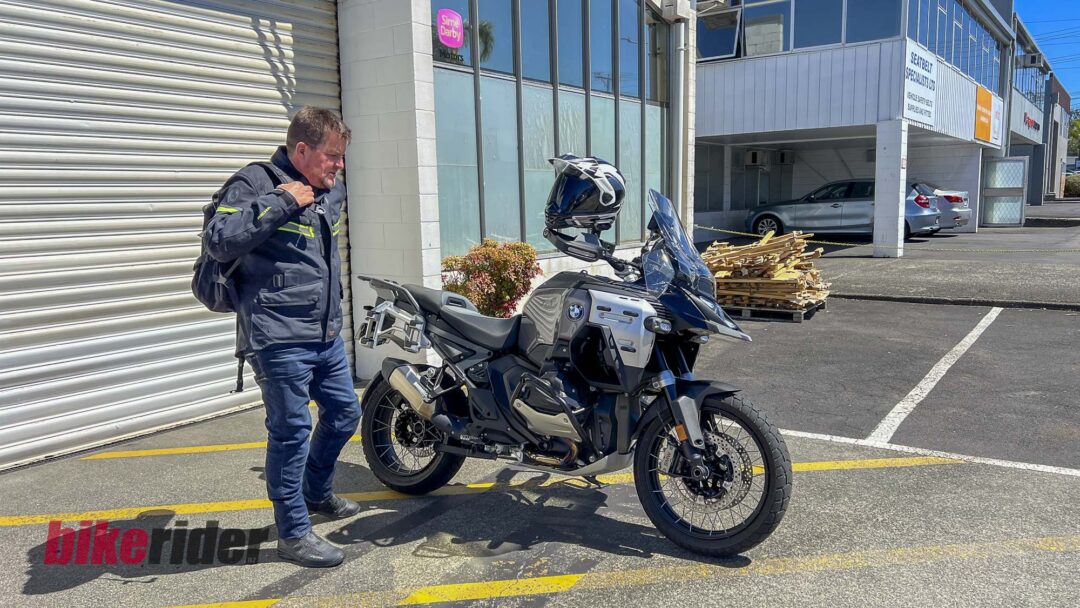
What’s Actually On It?
The GS Adventure sits firmly in the “long-distance, light off-road” camp. You can take it into the rough stuff, as the annual BMW GS Rallye proves, but few owners want to haul a machine this size through axle-deep sludge. Gravel roads and remote touring are its natural habitat—and that’s where the spec sheet begins to shine.
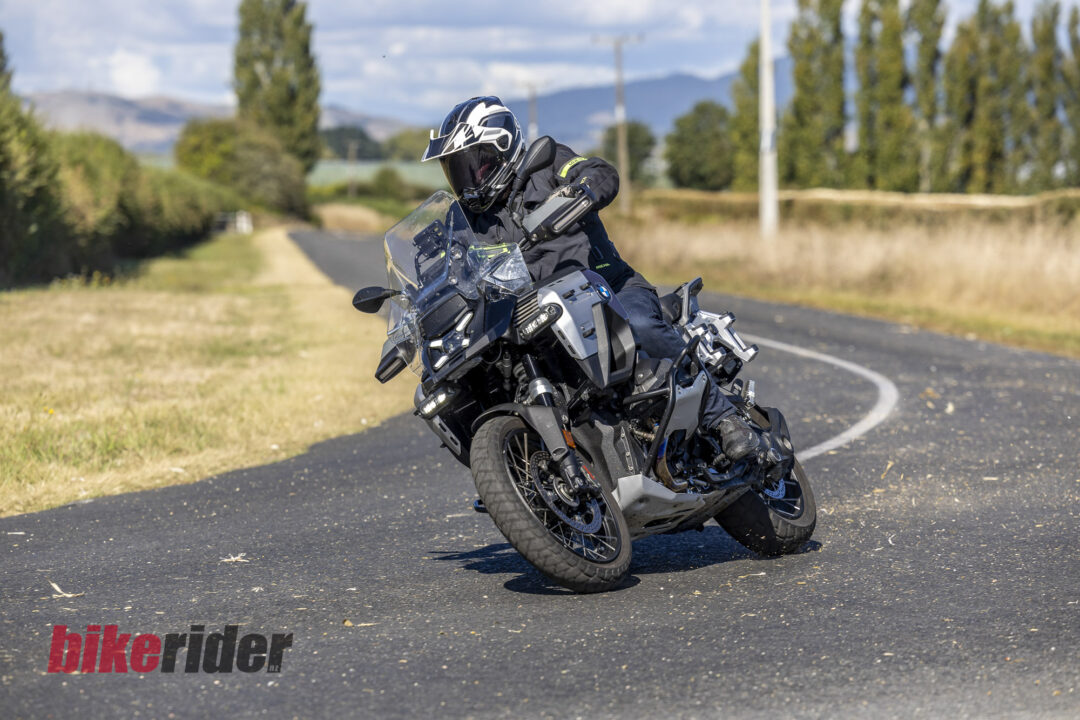
Triple Black Package Highlights
The first pack listed for the Triple Black is the Touring Pack, which provides the case holders and cases, and the set-up for the BMW Navigator. Next up is the Dynamic Pack that added Shift Assist Pro and Riding Modes Pro, while the brakes get an upgrade for sharper looks and performance. The Innovation Pack equips the bike with intelligent safety aids, with a radar system offering blindspot monitoring and rear collision warning while the matrix headlight is also improved with Headlight Pro. The rider and pillion get comfort seats with heating for both, while the seat height for the rider can be adjusted for an optimal riding triangle, and the screen gets a tint to it. The suspension is electronic and gets adaptive ride height control, and our test bike gets the ASA automatic shift system that bumps the price to $49,990. The wheels are spoked tubeless with a 19-inch front and a 17-inch rear wearing Metzeler Anakee Adventure rubber which is another nod to the intended purpose of this model, as is the radar cruise control that allows you to click off a tankful of gas on long, boring roads if that’s your thing.

Living With It: Tech, Dash and Controls
One of the standout impressions from the R 1300 GS platform is just how sorted it feels. From the moment the suspension whirrs to help you get the bike onto the centrestand, to the familiar BMW multi-controller wheel handling everything from the dash to the navigation, it all feels cohesive.
With the TFT screen paired to the BMW Navigator, you get a cockpit that rivals some cars for functionality. It’s easy to get distracted exploring screens and systems, but the interface remains intuitive—BMW have refined this layout to near perfection.
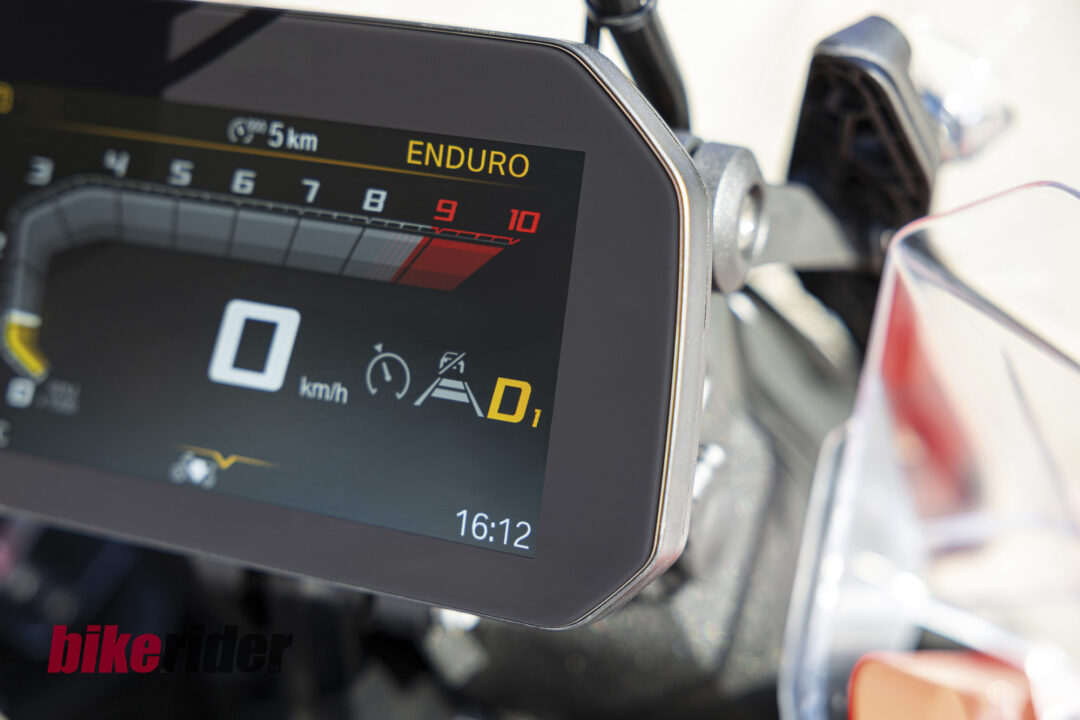
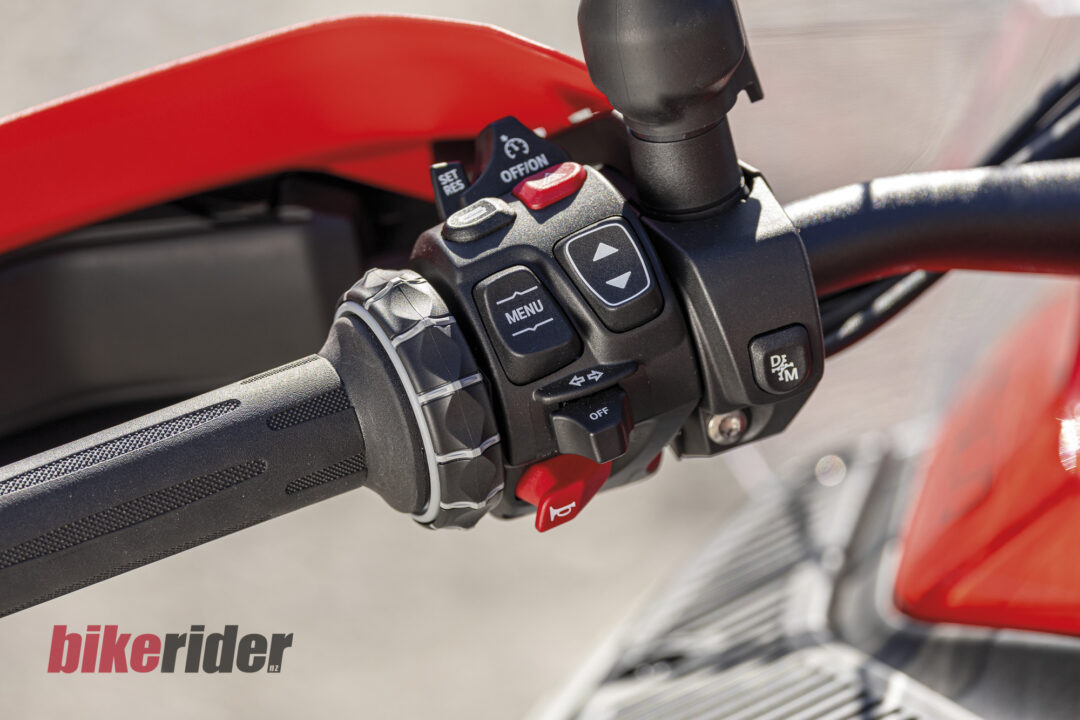
Performance: Where the Big Boxer Comes Alive
The shift from 1250 to 1300cc has given the boxer a livelier feel. It still produces its grunt down low, but the new engine genuinely enjoys revving. Below 3,000rpm it can feel a little hesitant, especially in auto mode, but get the motor spinning and it becomes a force.
Flick the mode into Dynamic Pro, and the suspension immediately tightens, gearing the bike up for harder riding. The GSA then transforms—offering sportsbike-level composure in a package that should, by all logic, feel unwieldy. BMW’s Telelever/Paralever magic continues to impress, soaking up the sharp Kiwi backroad edges while keeping the chassis stable under hard braking or enthusiastic corner exits.
This isn’t just a touring couch—it’s a truly capable backroad destroyer when the mood shifts.

ASA: The Auto Debate
Every manufacturer has approached the “auto” idea differently, but BMW’s ASA system is one of the slickest so far. There’s no clutch lever, but the gear lever remains—its job now is simply to tell the ECU what you want.
The result?
Silky smooth, instant, zero-hesitation shifting.
Manual mode lets you hold gears for spirited riding, while auto mode adapts surprisingly well to pace changes. Yes, the gearbox sometimes chases sixth at low revs when cruising, but start attacking a favourite road and it seems to anticipate your inputs almost perfectly.
Slow-speed control takes a small adjustment—using rear brake instead of clutch slip—but once mastered, it’s intuitive.
Off-road, the lack of clutch lever may be a deal-breaker for some, particularly those wanting to loft the front wheel over roots or ruts. But for most buyers, ASA will make slow-speed, on-road and touring life dramatically easier. BMW NZ says uptake of the auto option is far higher than expected—and it’s easy to see why.

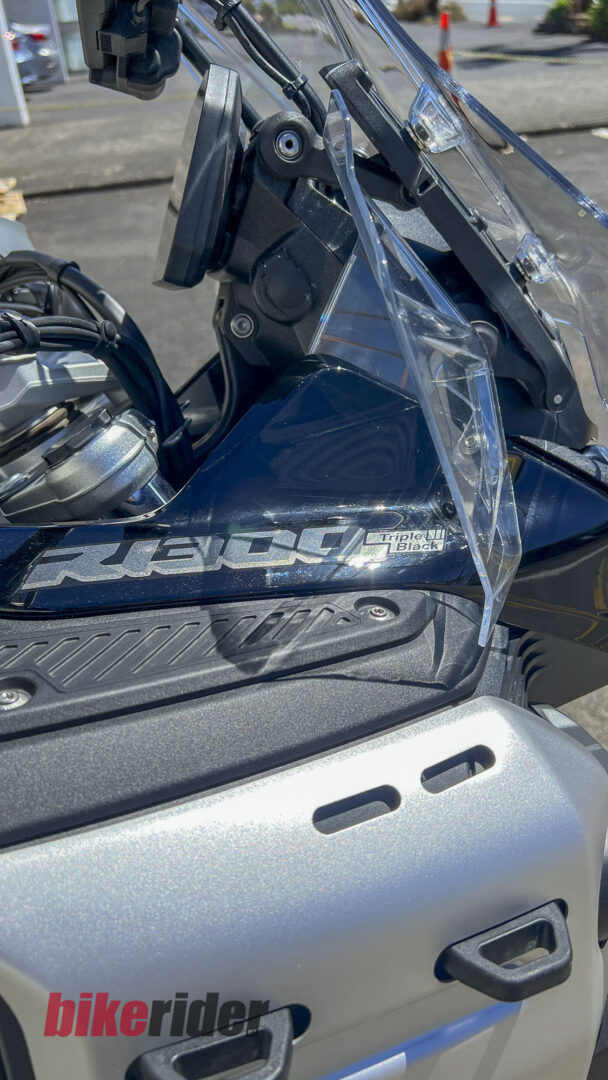
Touring: 500km at a Time
With 30 litres of fuel on board, the GSA’s touring range is a huge part of its appeal. The screen, especially raised, creates an impressively calm air pocket. I could ride visor-open with no buffeting at all—rare on any adventure bike.
The comfort seat lives up to its name, and being able to stretch backwards on long stints helps avoid fatigue. Radar cruise is a welcome addition for motorway slogs, and the big GS always feels planted, predictable and unshakeable.
But the best part? When you finally reach the twisties after hours of travel, the GS Adventure still has the enthusiasm—and surprising agility—to entertain.
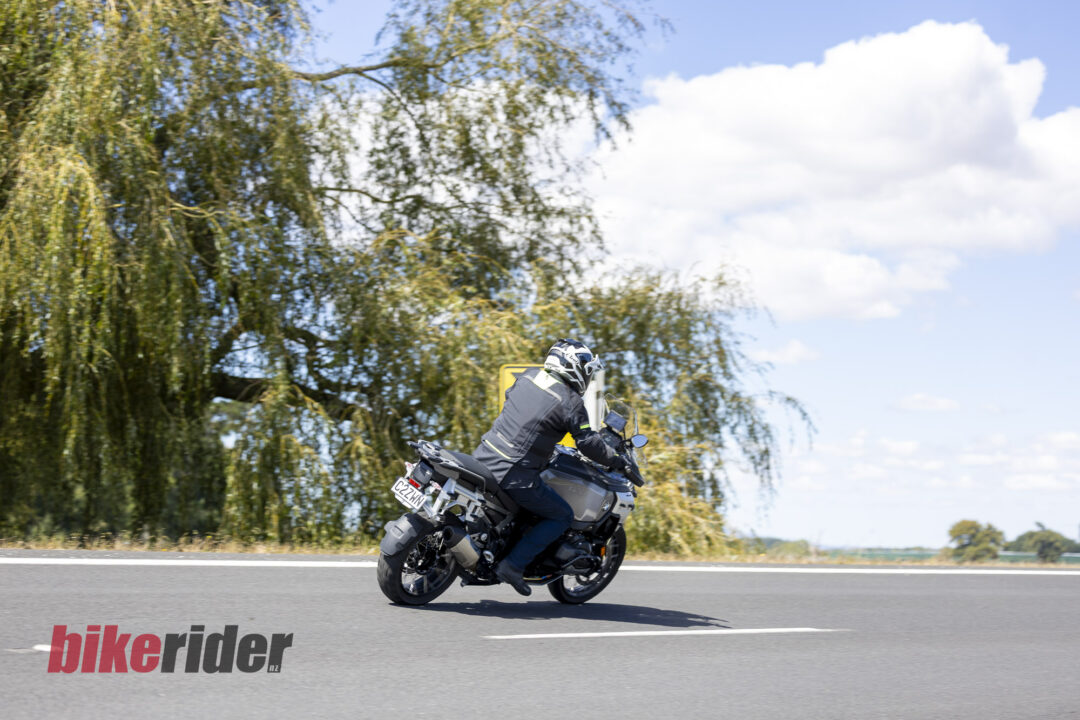
Verdict: The Transformer Transcends the Noise
The BMW R 1300 GS Adventure is the most complete GS yet. More tech, more refinement, more comfort and deeper capability—both on-road and off. The styling will divide opinion, but on the road, the bike’s sheer presence and performance quickly drown out any jokes.
For riders who want the absolute peak of modern adventure touring engineering, the new GS Adventure delivers a genuinely next-level experience.

BRM Verdict
9/10 BMW have been at the forefront of the adventure tourer category for decades, and the 1300GSA further cements that dominance. If you’ve got the money, this is the Mac daddy!
Review: Paul | Photography: Two Creative Photography
BMW R 1300 GSA Gallery
Specifications
2025 BMW R 1300 GS Adventure
Price: from $39,990 + ORC ($49,990 as tested)
Engine
Type
Air/liquid-cooled four-stroke flat twin engine with double overhead and chain driven camshafts (BMW ShiftCam) and balance gear wheels
Bore x stroke
106.5mm x 73mm
Capacity
1,300cc
Rated output
107kW (145hp) at 7,750rpm
Max. torque
149Nm at 6,500rpm
Performance / fuel consumption
Fuel consumption per 100 km based on WMTC
4.9l
Fuel type
Super unleaded (max. 15% ethanol, E15), 95 ROZ/RON, 90 AKI
Acceleration 0–100 km/h
3.4 s
Clutch
Multiplate clutch in oil bath, anti-hopping clutch, hydraulically operated
Gearbox
Claw-shifted 6-speed gearbox integrated in the transmission housing
Traction control
BMW Motorrad DTC
Chassis/brakes
Frame
Two-part frame concept consisting of main frame and rear frame bolted to it, co-supporting engine
Front wheel location / suspension
BMW Motorrad EVO-Telelever, handlebar tilting decoupeled via flex element, central DSA shock absorber
Rear wheel location / suspension
BMW Motorrad EVO-Paralever, cast aluminium single-sided swingarm, transversal connected swing arm bearings, central DSA spring strut, load compensation
Suspension travel, front / rear
210 mm / 220 mm
Wheelbase
1,534 mm
Castor
118.8 mm
Steering head angle
63.8 °
Wheels
Cross spoke wheels
Rim, front
3.00 x 19“
Rim, rear
4.50 x 17“
Tyre, front
120/70 R19
Tyre, rear
170/60 R17
Brake, front
Twin disc brake, semi-floating brake discs, diameter 310 mm, 4-piston radial brake caliper
Brake, rear
Single disc brake, bolted to the disc rim, diameter 285 mm, 2-piston floating caliper
ABS
BMW Motorrad Full Integral ABS Pro (lean angle optimized)
Dimensions / weights
Seat height at unladen weight
870 mm / 890 mm
Inner leg curve at unladen weight
1,840 mm / 1,980 mm
Usable tank volume
30 l
Reserve
approx. 4 l
Length
2,280 mm (over splash guard)
Height
1,588 mm (above windshield, at DIN unladen weight)
Width
1,012 mm (over hand guard)
Unladen weight, road ready, fully fuelled
269 kg
Contact
www.bmw-motorrad.co.nz

